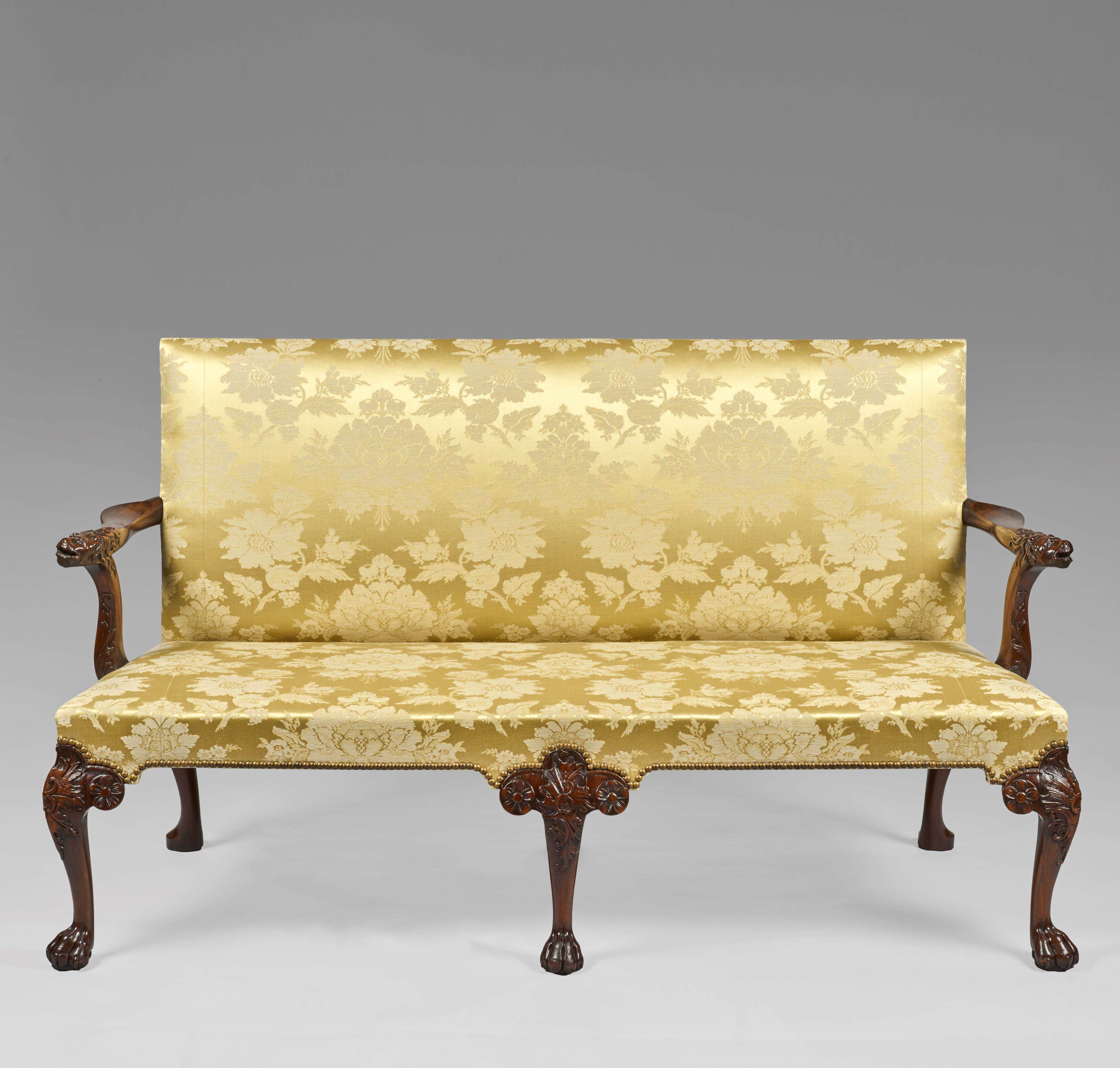The ceramic bodies were made at the Sevres manufactory, probably for the marchand-mercier or dealer Simon-Philippe Poirier whose clients included the cream of French nobility. They are almost certainly derived from the vase design inscribed 'flacon de Mr Poirier, D, 1775 du 11 Juillet, 2 pareille dont 1 fond vert, 1 idem bleu du Roy' and in faint pencil alongside : '1 en petitte roses'. Thus, it would seem almost certain that the design was made for Poirier's use, perhaps commissioned by him from Sevres. From 1772, Poirier was in partnership with Dominique Daguerre (d. 1796), their shop 'A la couronne d'or' was one of the great premises for the sale and purchase of luxury objects and funiture.
The addition of gilt bronze mounts introduces a function for the vases, namely candle light. The importance of candle light in an eighteeth century interior cannot be overstated. Rooms in Parisian hotels particuliers were relatively compact (compared to the larger size of royal palaces such as the Chateaux of Versailles or Fontainebleau), and required fewer candles to light rooms at night time. The glow of candlelight from these vase-candelabra may have been reflected in mirrors hung on the wall behind, or fallen onto the richly cast and finely chased gilt bronze mounts of the commode on which these candelabra may have been placed. The use of gilded brass (the alloy is generally a compound of approximately 75% zinc, 20% copper and 5% other metals) as an adornment was both practical and ornamental : brass was a durable yet ductile material for the creation of embellishments to carry candles. Another use of metal mounts was to give added protection to the fragile ceramic bodies. This was certainly a function of metal mounts on porcelains during the Middle Ages when Asian porcelain was rare, sought after and very expensive, but less of a concern in the 18th century when ceramic production was widespread. Even so, metal mounts provided something of a barrier to accidental damage. However, the principal function of the addition of gilt metal mounts was ornamental. Direct (or sand) casting technology was well established and enabled mounts of this type to be made relatively quickly, easily and could be made again and again from the same piece-mould (in wood or terracotta). Gilt bronze mounts also provided a rich decorative foil to the ceramic bodies, which in this case are monochrome blue - perhaps conceived at the Sevres manufactory in imitation of the high-prized imperial Chinese monochrome wares. In a remarkable counter-flow of cultural and material exchange, soon after monochromes began to be made in France, coinciding with the fashion for neo-classical interiors of the 1760s, Chinese kilns at Jingdezhen also began to make monochrome wares specifically for export, which in some cases were (until fairly recently) mistaken for Sevres porcelains. An example of this is the vase bought by George IV in 1806, in the Royal Collection at Windsor Castle (RCIN 64062). Another is in the J. Paul Getty Museum, Los Angeles (object no 70.DI.115).
The bodies were made at Sevres under the design direction of Jean-Claude Thomas Duplessis (d. 1783) son of Jean Claude Ciambellano, known as Duplessis (1699-1774), whose designs for both porcelain and mounts dominated the manufactory's production for over two decades from the early years at Vincennes in the late 1740s until his death in 1774. Duplessis was a Savoyard from Turin who came under the protection of the Prince of Carginan (1690-1741) when he moved to Paris in 1718 and later Duplessis found patronage from the highly cultivated connoisseur and bibliophile, the Marquis d'Argenson (1722-1787) before he was established at the Vincennes, later the Sevres manufactory. His son also worked at the Sevres manufactory.
A pair of vase candelabra of identical design with green bodies was sold at Christie's London, 6 December 2007, lot 32 (£120,500). This pair was formerly in the collection of the renowned collector, aesthete and philanthropist Alfred de Rothschild (1842-1918), a leading figure among a crowded field, and which were subsequently bequeathed to his natural daughter Almina (c. 1877-1969), who in 1895 married George Herbert, 5th Earl of Carnarvon. Alfred's dowry of £500,000 allowed Lord Carnarvon to maintain the estate at Highclere Castle.
Sir Edward Hulton (1906-1988) achieved renown as a successful newspaper properietor, the third generation to achieve success in the media. Among many publications to his name, he started the Picture Post, whose famous photographic record became the Hulton Archive, now part of Getty Images. He married first Kira Goudime-Levkovitsch in 1927, and secondly Princess Nika Yourievitch in 1946. His second marriage was dissolved in 1966 which may have occasioned the sale of the vases at Christie's.
.svg)

.svg)










.jpg)



